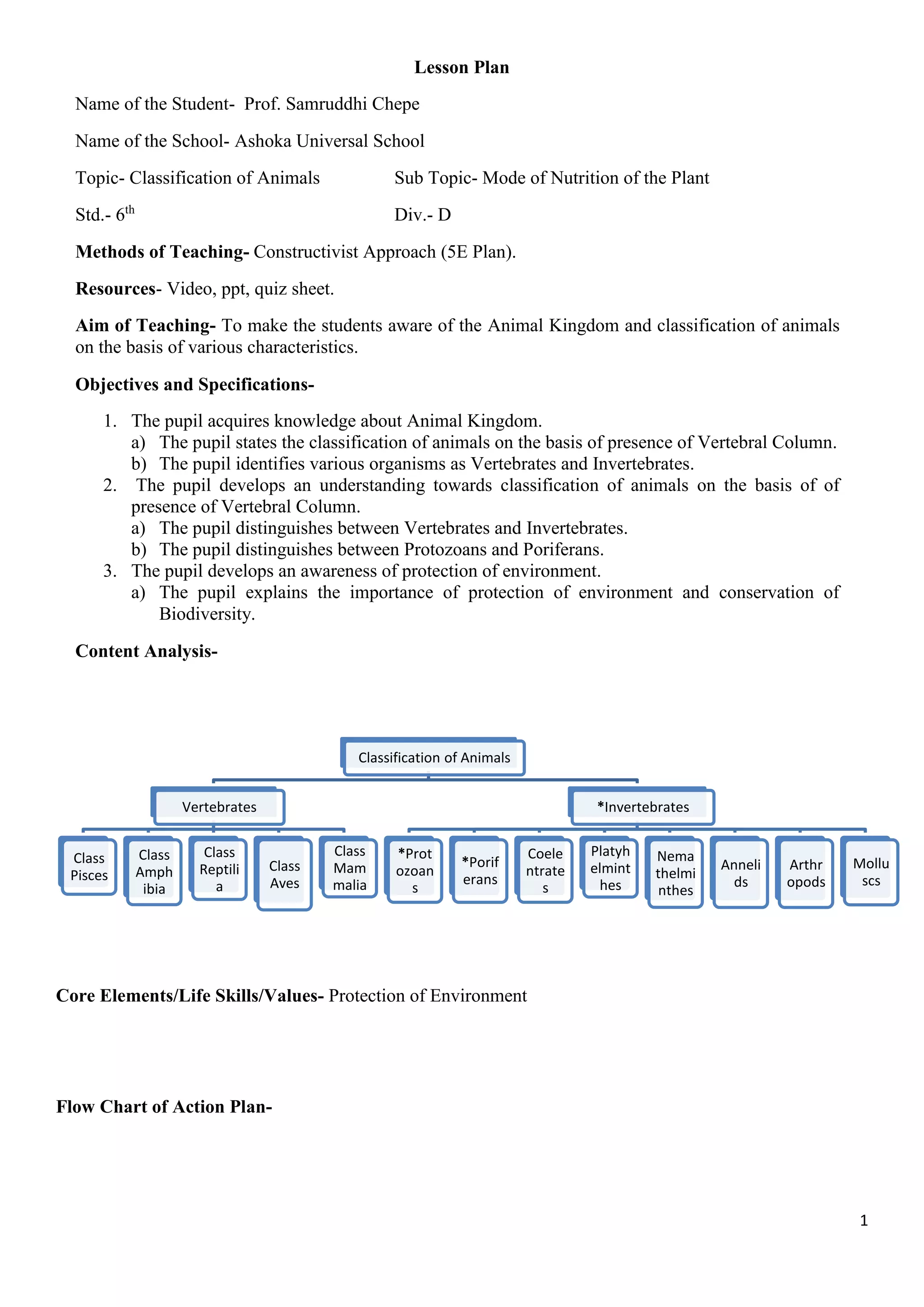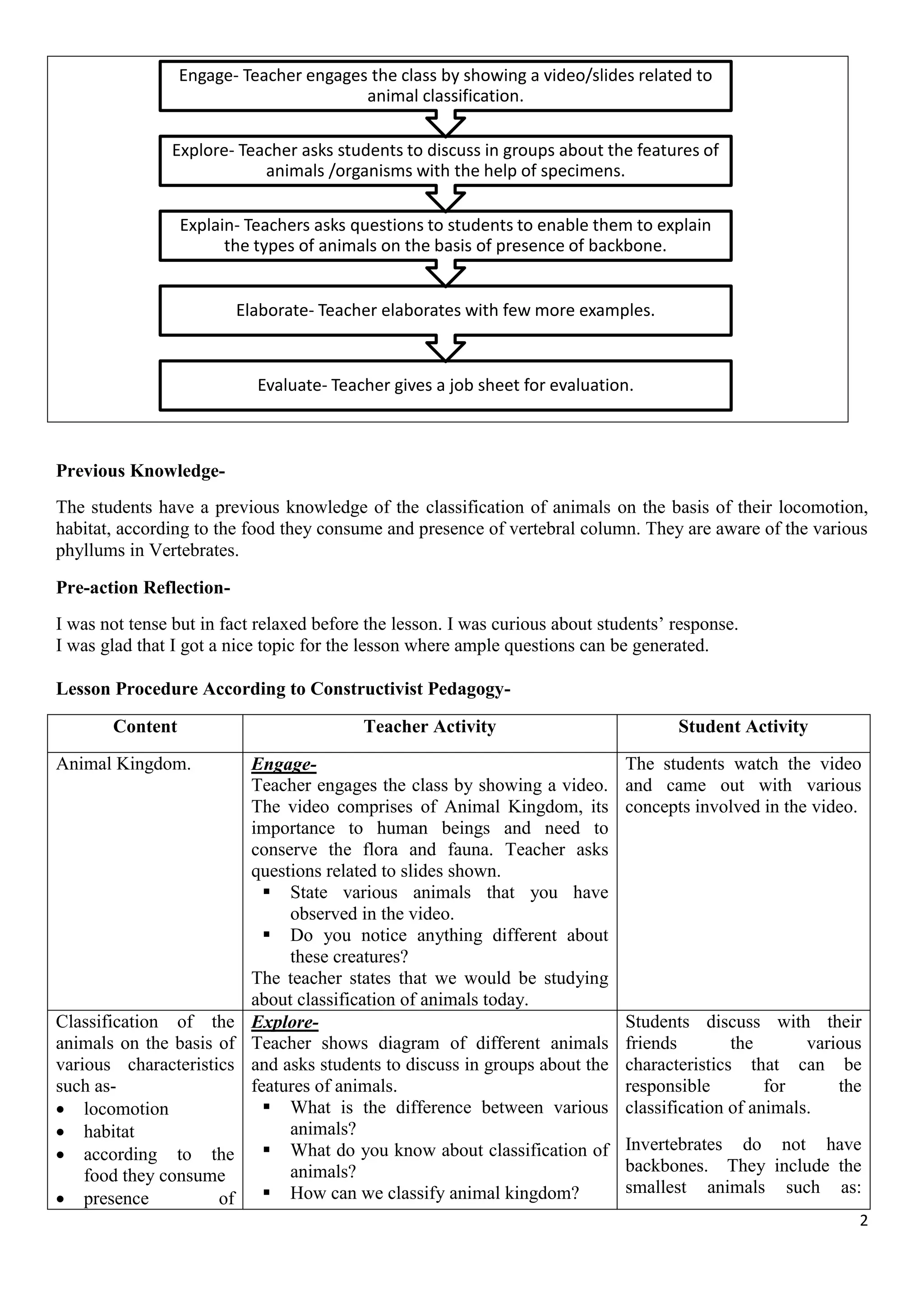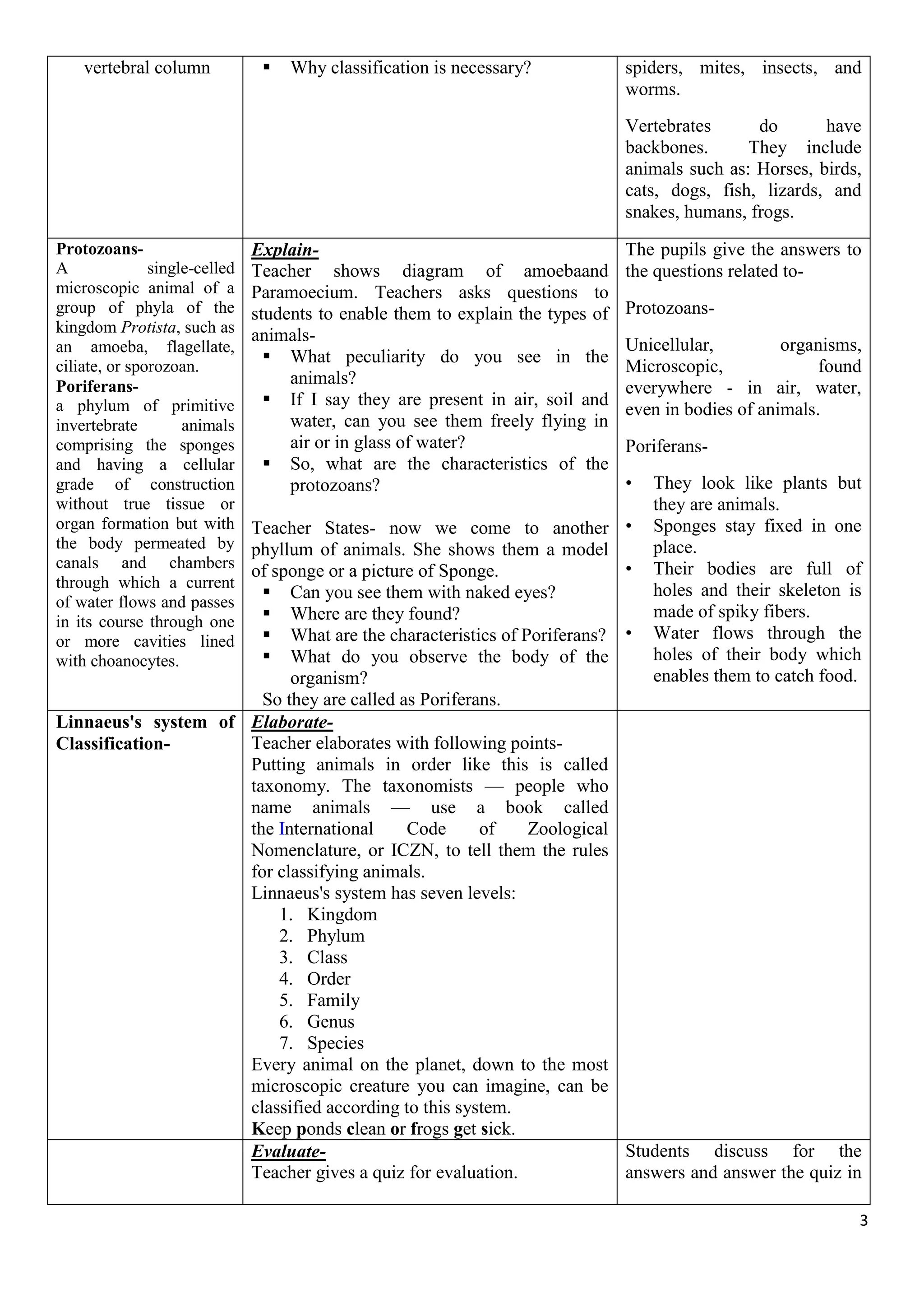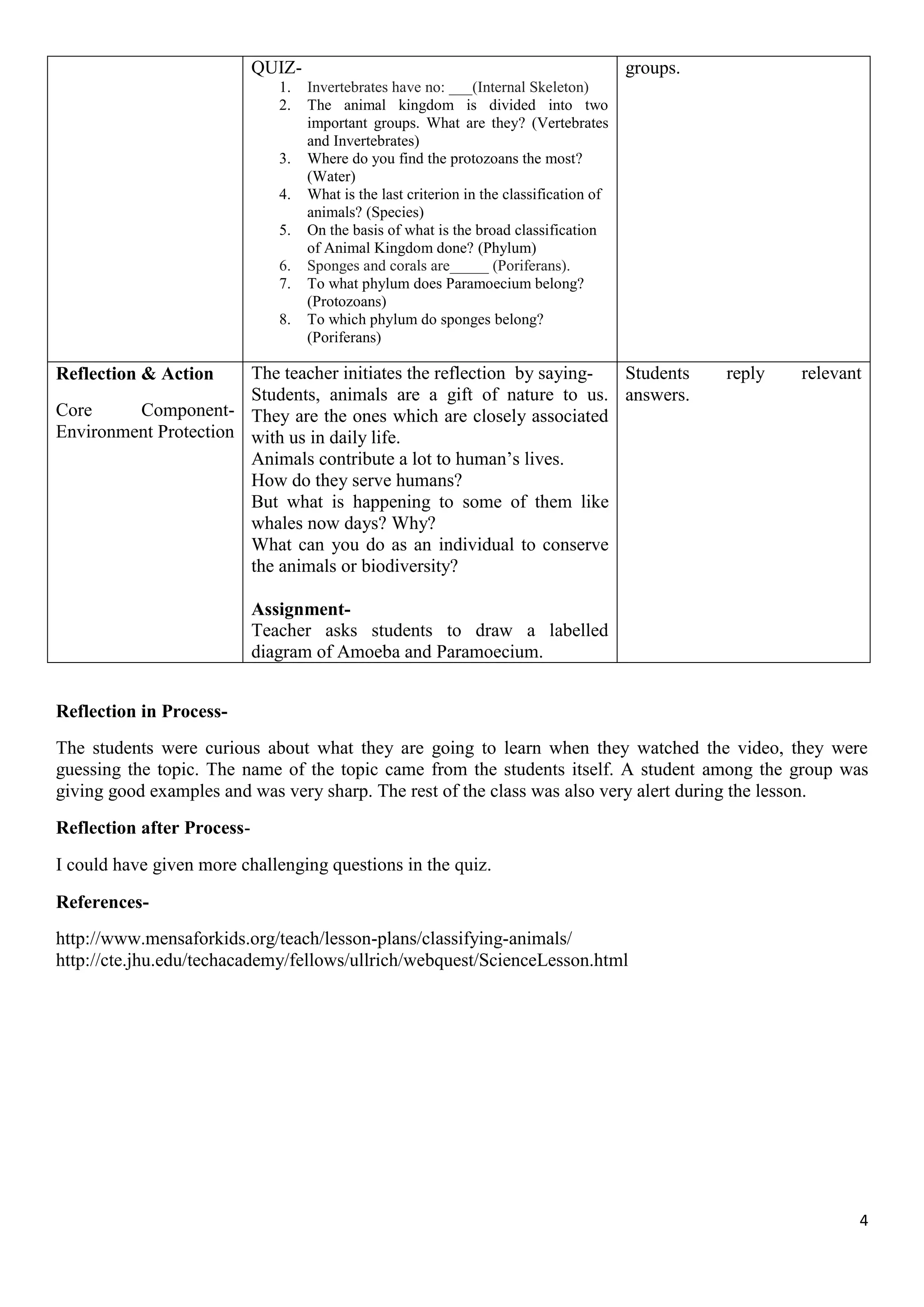The document outlines a lesson plan for a 6th-grade class on the classification of animals, focusing on their modes of nutrition and structural characteristics. It employs a constructivist teaching approach, utilizing multimedia resources and group discussions to engage students and enhance their learning. Key objectives include understanding the animal kingdom's classification into vertebrates and invertebrates and fostering awareness of environmental protection.



